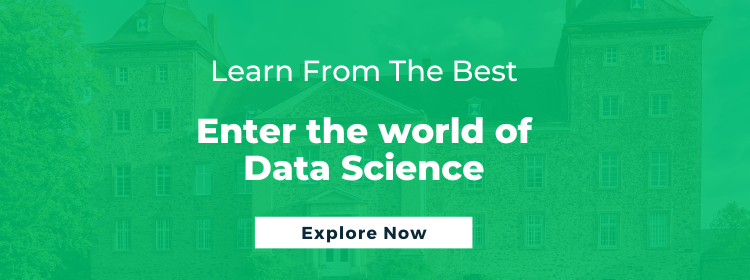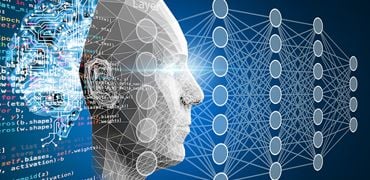What is Statistical Modeling? How Does it Help Companies Grow?

- What is Statistical Modeling?
- Types of Statistical Models
- What are Statistical Modeling Techniques?
- How to Build Statistical Models?
- Importance of Statistical Modeling
- Reasons for Learning Statistical Modeling
- How to Learn Statistical Modeling?
- How Emeritus Can Boost Your Career in Statistical Modeling?
In 2006, the British mathematician Clive Humby penned the phrase, “Data is the new oil.” Sixteen years later, nothing seems closer to the truth. But simply amassing colossal volumes of data isn’t enough. Conversion of data into actionable information requires sophisticated statistical models that rule out erroneous conclusions and correctly summarize data patterns. When viewed through the lens of Artificial Intelligence (AI), understanding ‘what is statistical modeling’ becomes the first key step to data reliability and empowering businesses. Now that we know statistical models are the lifeblood of data analytics, let’s find out how they continue to shape the fate of modern information analytics and what market prospects surround this profession.
What is Statistical Modeling?
 Statistical modeling quantifies uncertainty within a system of ideas or hypotheses. It creates a model with a pre-set goal to extract logical inferences about reality while subtracting irrelevant elements that might cloud our vision. Scientists use statistical models that generate intuitive visualizations to estimate reality and establish correlations between random and non-random variables within a set. Statistical modeling is central to judging the quality of data analysis practices in organizations. It utilizes quantitative evidence to help you understand which data is qualitatively trustworthy, becoming a hotbed for finding reliable and reasonable conclusions from extensive data sets.
Statistical modeling quantifies uncertainty within a system of ideas or hypotheses. It creates a model with a pre-set goal to extract logical inferences about reality while subtracting irrelevant elements that might cloud our vision. Scientists use statistical models that generate intuitive visualizations to estimate reality and establish correlations between random and non-random variables within a set. Statistical modeling is central to judging the quality of data analysis practices in organizations. It utilizes quantitative evidence to help you understand which data is qualitatively trustworthy, becoming a hotbed for finding reliable and reasonable conclusions from extensive data sets.
Types of Statistical Models
Depending on the number of random and non-random variables, statistical models differ in handling the complexities of a tangible mathematical equation. There are three primary types of statistical models:
- Parametric: When a model requires some pre-defined parameters to make predictions, it is a parametric model. They are usually linear models, which are relatively easy to understand. Poisson distribution and linear regressions are examples of parametric models.
- Non-parametric: Non-parametric models such as Decision Trees and Gaussian kernels depend on continuous data and infinite-dimensional functions to capture a growing amount of data. They are more flexible than parametric models and offer more accurate results due to their high functional capacity.
- Semi-parametric: Semi-parametric models comprise finite and infinite entities that allow you to manipulate the defined parameters and help establish an easily understandable representation of real life. Gaussian mixture models are an example of semi-parametric models.
ALSO READ: How To Learn Data Science and Enhance Your Career?
What are Statistical Modeling Techniques?
Understanding what is statistical modeling is only possible by investigating data assimilation procedures. There are three major categories of statistical analysis. Let’s find out what they are:
1. Supervised Learning
A statistical modeling technique that uses labeled input data to identify congruent variables and correctly predict the output. Real-life applications of supervised learning include fraud detection, risk assessment, etc. Supervised learning can be further classified into
1.1: Regression Algorithms: They are used to predict continuous variables such as market trends, demographics, or weather forecasts based on the correlation between input and output variables. Linear Regression, Polynomial Regression, and Bayesian Linear Regression are some of the most famous regression models.
1.2: Classification Algorithms: When one systematically wants to classify a large pool of complex data points, the machine learning technique deploys classification algorithms. Classification algorithms use models such as decision trees, Naive Bayes, and neural networks.
2. Unsupervised Learning
Here, the algorithms independently classify similar data sets to extract hidden patterns without external intervention. Unsupervised learning works primarily by clustering similar data points and is classified into the following categories:
- Probabilistic clustering
- Overlapping clustering
- Hierarchical clustering
- Exclusive clustering
3. Reinforcement Learning
In this case, the recipient learning agent can interpret the testing environment and learn to make optimal decisions with maximizing rewards as an incentive. Autonomous cars are a shining example of the reinforcement learning of artificial intelligence.
How to Build Statistical Models?
Now that you know what is statistical modeling, you should have a concrete idea about its purpose. The following questions help determine the same:
- What is the final aim of the analysis? Is there a specific question to answer or does it only involve a set of variables and predicting among them?
- How are the dependent and explanatory variables related to each other? How does one visualize the relationship?
- Is there any specific count of parameters that must be included in the model?
 Once you answer these questions, you move on to the building stage of the process.
Once you answer these questions, you move on to the building stage of the process.
- Start with data visualization and take note of all the variables in the equation
- Predict theoretically distinct sets and establish the relationship among related variables
- Calculate the relationship between the predictors with bivariate descriptive statistics
- Run models without control variables and compare the results
- Include the entire list of significant interactions within the model by eliminating the non-significant ones first
- Take note of the research problem statement while testing the predictors and variables
Importance of Statistical Modeling
What is statistical modeling in terms of industries and career opportunities? It forms an integral part of data analysis and plays a crucial role in different industries. Here is a list of the most relevant opportunities for modeling experts:
- Production analysis of workplaces
- Data analysis of stock markets
- Quality control of an organization
- Health record analysis
- Sales performance analysis
- Budgeting and business analysis
- Prediction of natural disasters
- Research & Development wings of companies
- Determining political campaigns
- Risk management in banking sectors
- Transportation sector
- Cryptocurrency
Reasons for Learning Statistical Modeling
The digital transformation of businesses has ushered in heavy demand for data-literate professionals. As statistical modeling informs data analysis methods across industries, it is one of the central skill sets that recruiters look for. Moreover, a 2022 BLS report projects a 31 per cent increase in demand for statisticians and mathematicians in this decade. The fusion of applied statistics and business analytics is the prime need of the hour, making statistical models indispensable elements of the production system. Learning statistical modeling is your stepping stone to partake in the development of futuristic products.
ALSO READ: Data Science vs Data Analytics: Why Data Makes the World Go Round
How to Learn Statistical Modeling?
Big data analysis and other branches of data science are related to the branch of statistics. Therefore, a graduation degree in the subject would help you grasp the rapidly evolving statistical methodologies easily. For non-statistics data enthusiasts, a focused curriculum will aid students in understanding the basics of statistical modeling alongside creating analytical reports and their easy visualizations. To sum up, here is a list of academic and professional qualities of a statistical model analyst:
- An Master’s degree in Econometrics Statistics or MBA in Finance/Systems
- Strong programming/coding skills (Python, Java, C++)
- Competent data visualization skills
- Skills to formulate hypotheses, prepare data, and build predictive models
- Build predictive insights from exploratory analysis
- Extensive collaboration skills and strong industry-specific knowledge
How Emeritus Can Boost Your Career in Statistical Modeling?
Statistical models are the cornerstone of the major scientific breakthroughs of the past decade. As production systems get more digitized and we move towards a holistic world of data, Emeritus’ courses combine versatile industrial knowledge with the latest research-based curriculum. If you want to correctly respond to the epochal changes in the field of technology, boost your employment chances with the data science and analytics courses from Emeritus.
By Bishwadeep Mitra
Write to us at content@emeritus.org











































